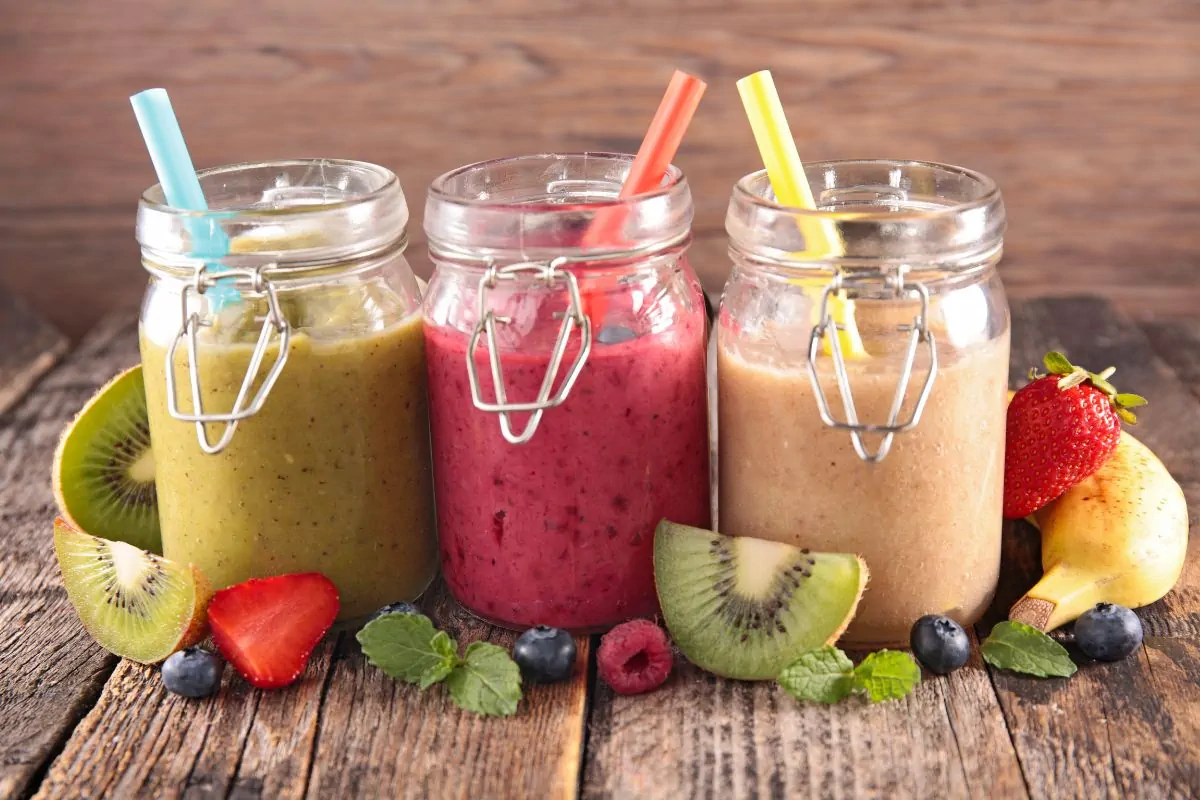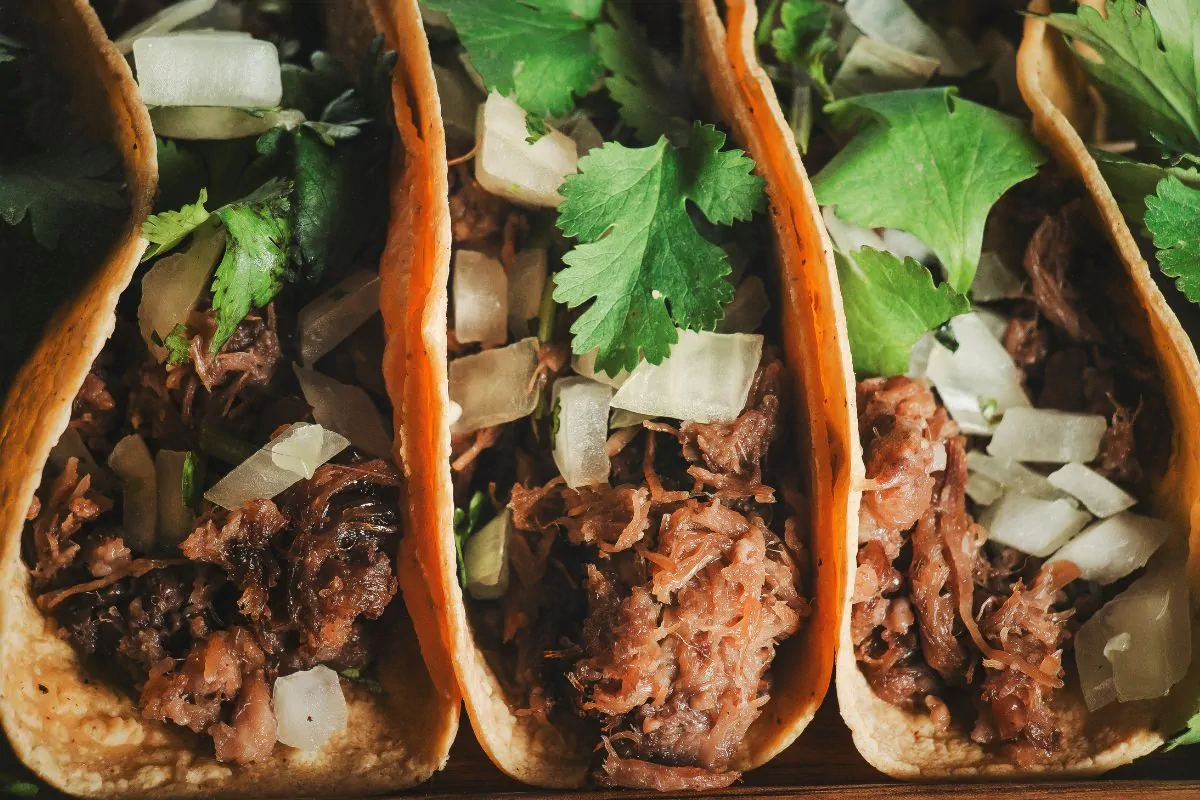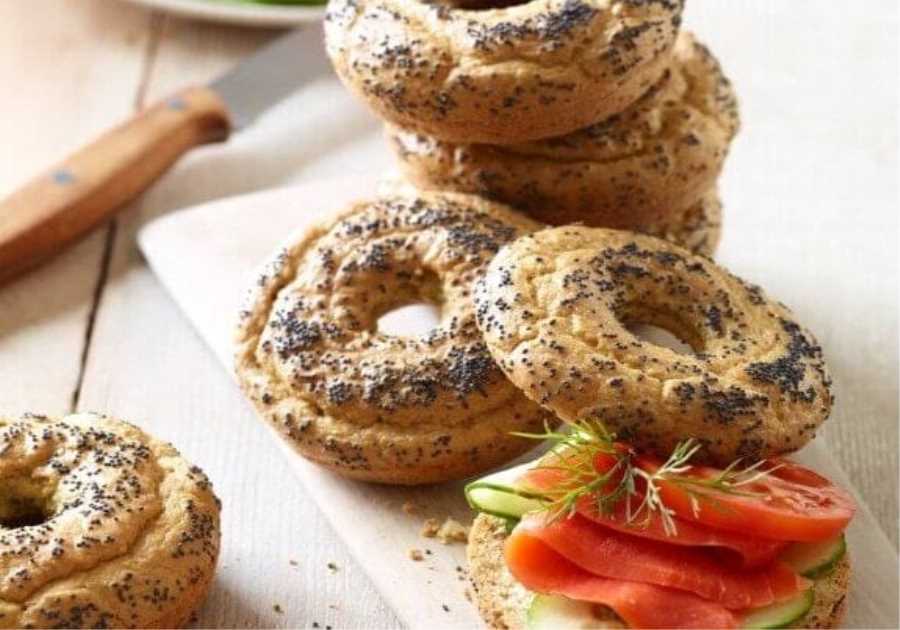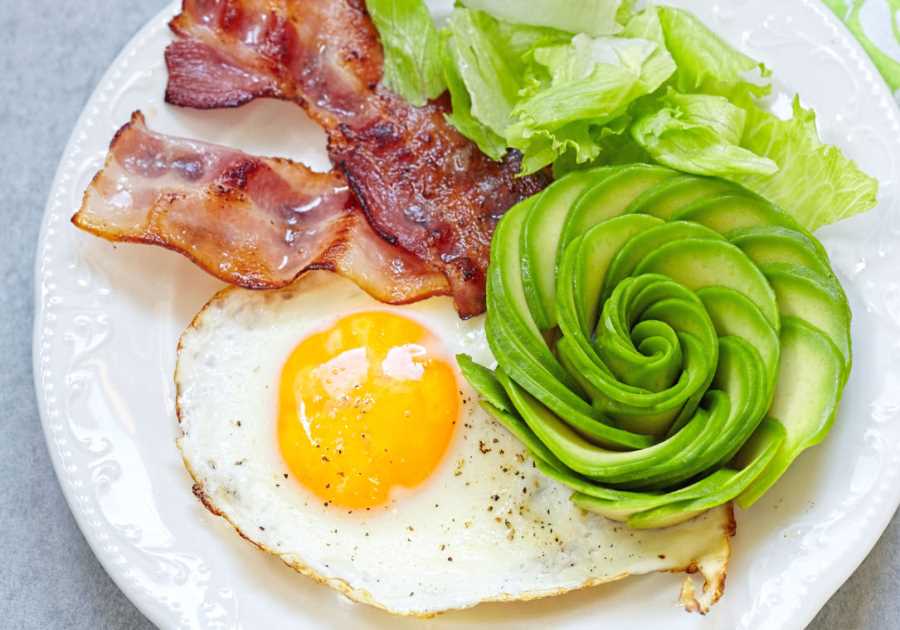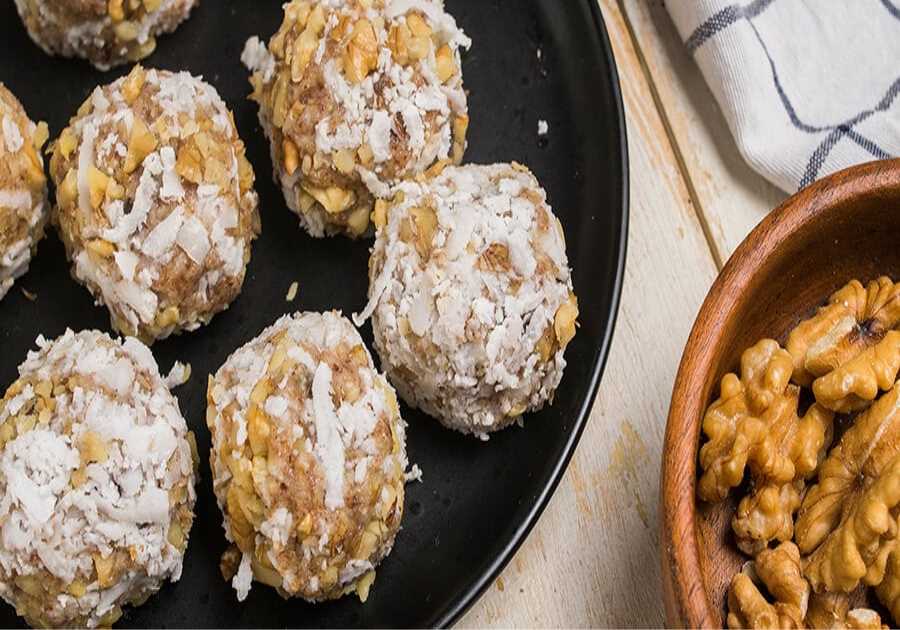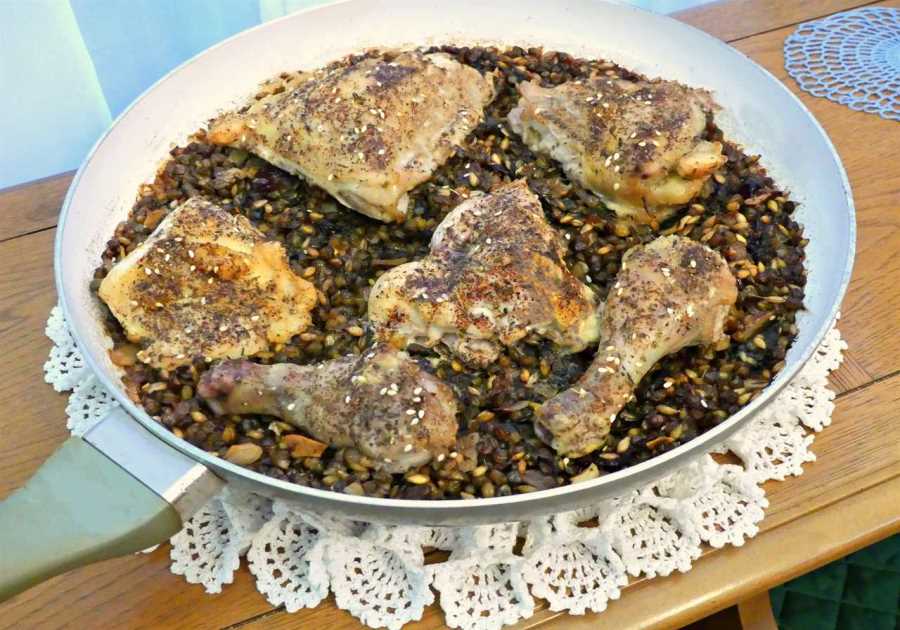
What is the Lazy Keto Diet?
The Lazy Keto Diet is a way of eating that combines elements of the ketogenic diet with a more relaxed approach. It is designed to help people lose weight and gain health benefits without following a strict, rigid regimen.
The core component of any ketogenic diet is fairly straightforward: When you consume fewer than 50 grams of carbohydrates daily from sources like vegetables, fruits, and some dairy products, your body enters a state called Ketosis. In this state, it begins burning fat for energy instead of glucose from carbohydrates.
By following the Lazy Keto Diet, individuals can benefit from some of the positive effects of ketosis without needing to strictly control their carb intake or track it rigorously throughout the day.
This means indulging in low-carb foods such as eggs, cheese, meat, and protein-rich fish while limiting trans fats and sugar. It also involves limiting other common sources of carbs, such as starchy vegetables like potatoes and rice. In particular, careful monitoring should be made regarding your daily intake of artisanal bread and baked goods, which may contain hidden added sugars or other highly processed ingredients that could lead to spikes in blood sugar levels.
Since there's no required counting or tracking involved on the lazy approach to keto dieting, it can be easier for some people who find traditional carb tracking difficult to maintain over time. But at the same time, it requires an intuitive understanding of how different types of food will affect your body’s ability to enter and stay in ketosis over time. So even though it’s called "lazy" it still takes quite a bit of discipline on behalf of those following the lifestyle so that they don't slide back into unhealthy habits over time!
Calorie-counting
The lazy keto diet is a simplified version of the keto diet that focuses more on carbs and less on protein. The main goal is to keep the net carbs as low as possible.
The lazy keto diet is a great place to start if you're new to keto. It's a much easier way to lose weight. However, it may not give you as much success as the traditional keto diet.
Although the lazy keto diet is much lower in calories, tracking your calories is still a good idea. You can do this by recording your daily intake in a food diary or downloading a tracking app. This will allow you to see how many calories you consume and how to create a calorie deficit.
A calorie-counting method will help you maintain a healthy weight and reduce your risk of developing health problems. Counting calories will also help you avoid overeating.
Easy keto mixed berry smoothie
Easy keto mixed berry smoothie is a low-carb snack, meal replacement, or great breakfast! It is high in protein, healthy fats, and nutrients.
Start by putting the ingredients in a blender to make a delicious smoothie. You can use a high-speed blender to get a smooth consistency. For a thicker and creamy smoothie, add more ice.
Add a little protein powder for extra nutrients. You can also replace the protein powder with your favorite low-carb sweetener. This will ensure the protein will not add extra carbs to your smoothie.
You can add heavy cream or coconut cream to increase the creaminess of your keto berry smoothie. These ingredients will also boost the fat content.
Following a vegan diet, you can replace dairy with unsweetened almond or hemp milk. Yogurt can also be used instead of coconut cream.
The berries can be frozen. Frozen berries are usually cheaper than fresh berries. They will also add thickness to your smoothie.
Health benefits of low-carb diets
A low-carb diet can reduce cholesterol and triglyceride levels and help you lose weight. A low-carb diet can help prevent or treat type 2 diabetes. Despite their negative reputation, low-carb diets have many health benefits.
A low-carb diet effectively improves insulin sensitivity, reduces triglycerides, and increases HDL cholesterol. The diet helps you feel more full by eating less food. It also improves your blood sugar and cholesterol levels.
Low carbohydrate diets aren't for everyone, though. You must be determined to stick to the plan, and you'll need to cut out certain foods. If you're a diabetic, you may need to lower your insulin dose. Fortunately, there are plenty of low-carb foods you can eat.
These include low-calorie-density foods such as legumes, nuts, and vegetables. They are high in fiber, which makes you feel full faster. Similarly, they're high in water. This helps the body flush out more fluids and nutrients.
It can make it harder to get into ketosis
Getting into ketosis can be a little more difficult when you're on a lazy keto diet. The key is to eat the right foods. Several carbohydrate-rich foods can be a part of this diet, but the best approach is to focus on nutrient-rich carbs.
You want to consume plenty of fruits and vegetables. These will help keep blood sugar levels stable and provide anti-inflammatory benefits.
You also want to keep protein in your diet. Proteins help repair and build muscles. Including too much protein can cause your body to stop entering ketosis, which may be bad for you.
Your daily carb intake should be 20 to 50 grams per day. This number will vary from person to person. If you're unsure about your carb intake, consider checking out the keto calculator.
It would be best to stick to a diet that limits carbohydrates to around 10% of your total calories. This can make it easier to avoid blood sugar spikes and avoid feeling hungry.
Frequently Asked Questions
Can I cheat 1 day on keto?
Exploring options that bend the rules has never been easier. With information flowing like water, it's tempting to ask if you can stretch out the boundaries of your diet and cheat for a day, all while maintaining your healthy streak.
The answer, however, may not be what you expect. When it comes keto, there's no room in the world for compromise. It is essential to follow through with your diet in order to reap the benefits and ensure long-term sustainability of your weight loss efforts and overall health.
Cheating on keto may derail any headway you've made toward your goals and discourage results as fast as you were able to achieve them. Your body will not respond well to sugary or greasy foods, which can lead to a decrease in ketogenic diet results.
Sometimes it can be difficult to avoid a lapse. It may be more difficult than following the diet. Therefore, evaluating the impact on your lifestyle could be crucial depending on factors like age, activity level or genetics.
Even though temptation may cloud your judgment, ultimately, you are the only one who can decide what is best for your health and well-being.
Can you eat oatmeal on keto?
Finding answers to unanswered queries can be hard. And when it comes to finding the right food choices for the keto diet, many still feel overwhelmed and lost. This is especially true for oatmeal, which is high in carbs.
Oatmeal can, contrary to popular belief, be successfully integrated into a keto diet if you have the right circumstances. It all depends on the type of oatmeal you choose and how much you eat.
It starts by looking at ingredients like nuts, seeds, or other low-carb options that can be combined to make a delicious and nutritious breakfast. Pure oatmeal is rich in fibre and protein. However, they do not compromise the keto diet.
It's important to monitor your portions when you add oats to the daily menu. It's not a good idea to go on a marathon or make too many breakfast bowls. Instead, be mindful of portion sizes and use innovative ingredients like coconut oil, chia seeds, cinnamon powder to maximize flavour.
When done correctly, oatmeal can offer an unusual breakfast option in a Keto diet. So don't let anyone tell you that sticking to your principles means sacrificing taste - because proper prepping spells out some serious results!
What happens in the first week of keto?
The first thing to do when you are ready to start a ketogenic diet is to do your research. Understanding what foods to avoid and how many carbs are allowed daily is essential. It is essential to understand what foods will help you achieve the ideal balance of macronutrients.
Once you've mastered the basics, it's now time to create meals that will support your new lifestyle. Eating whole foods and not processed sugars will make it easier for your body to adjust faster. A few tweaks can make it easier to focus and increase energy, as well as reduce cravings.
The next step is learning proper portion control and managing meal timing while on the keto diet, enabling your body to enter a state of ketosis where it begins burning fat instead of sugar for energy. This can be accomplished by monitoring macros or consulting a nutritionist, who may offer individual advice.
When transitioning into keto, newcomers must take their time. They need to ensure that their bodies are ready for the change before they can go full throttle. This is a crucial step in the journey. It is vital to get adequate rest and keep hydrated. Allow yourself three days to assess whether this is working for your body. Each person responds differently to different things so you can give it some time.
Statistics
- Carbohydrates are the body's preferred source of energy, but on a strict ketogenic diet, less than 5% of energy intake is from carbohydrates (learn more in our beginner's guide for the ketogenic diet). (eatingwell.com)
- One older study found that the ketogenic diet improved insulin sensitivity by a whopping 75% (25Trusted Source (healthline.com)
- But, a 1-ounce slice of cheese delivers about 30% of the Daily Value for saturated fat, so if you're worried about heart disease, consider portion size when eating cheese. (eatingwell.com)
- Proteins should account for around 10–30% of energy needs, while carbs are usually restricted to 5%. (healthline.com)
- When following a ketogenic diet, carb content is between 5–10% of calories consumed, though looser versions of the diet exist (7Trusted Source (healthline.com)
External Links
fdc.nal.usda.gov
academic.oup.com
hsph.harvard.edu
ruled.me
How To
The Best Foods to Eat on the Ketogenic Diet
A ketogenic diet is only possible if you consume the right foods. You should eat plenty of protein and fats. Avoid processed and sugary foods.
Eating whole foods is important. It's also important to consume moderate amounts healthy fats such butter, avocado oil, coconut oil, butter, and other healthy fats. Ensure you eliminate all kinds of refined sugar, bread, and grains to maximize potential success with your new way of eating.
Choosing organic whenever possible should be a top priority for attaining peak nourishment levels for your body. Opting for free-range eggs also ensures you take on vital nutrients from concentrated sources naturally fed by their environment.
Your taste buds will be enticed by delicious low-carb recipes such as broccoli, spinach, kale, and other common low-carb ingredients like cauliflower, spinach, and spinach. It is possible to add probiotic properties to your diet through fermented foods. These have been linked to reduced inflammation and better metabolic health.
It is possible to experiment with wild meats like partridge, duck, venison and venison. This will add variety to your menu, while providing lean proteins, as well as minerals, that are often difficult to find in other food.
It's about finding the perfect balance between eating fresh produce as it is, and adding nutritional-dense ingredients to make you satisfied.

